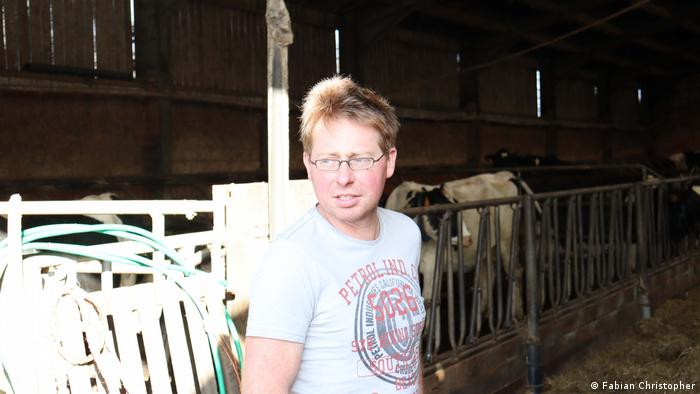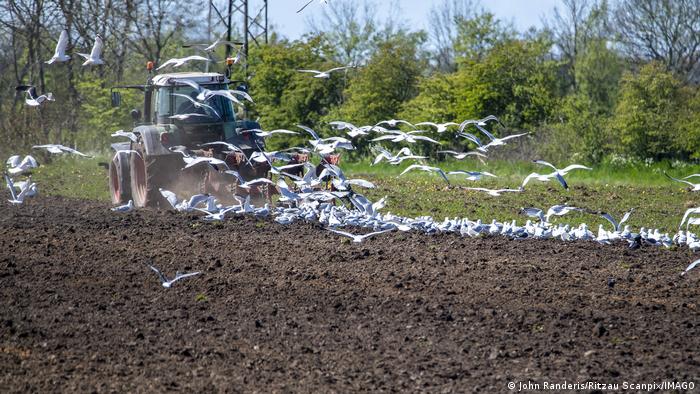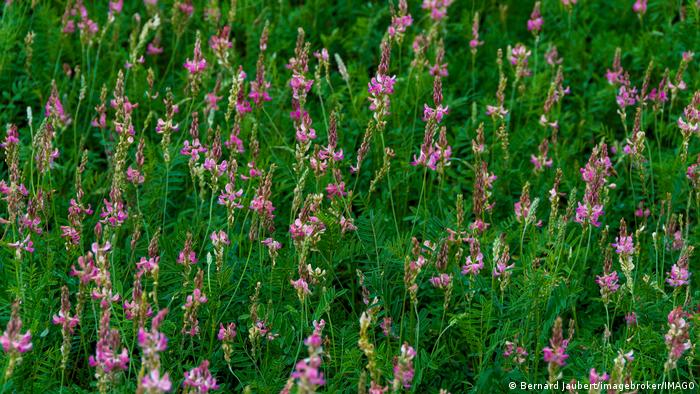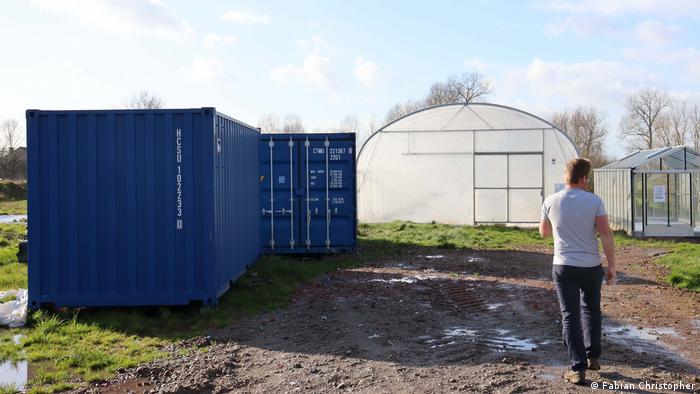“Now society expects much more from farmers,” reflects Belgian dairy farmer Kris Heirbaut. “We produce food, but also help to reduce climate changes.”
Heirbaut has a farm in Temse, a Flemish village located 30 km (18.6 mi) from Antwerp. He has a small shop outside the farm that sells dairy products, including ice-cream made from milk he has from his own cows.
Two years ago, concerned with agriculture’s damage to the environment, Heirbaut signed up to a “carbon farming” pilot project funded by the European Union that aims to improve agricultural soil health while tackling climate change.
The project was completed in summer 2021 and allowed farmers in Belgium, Germany, Norway, and the Netherlands to sell carbon credits for carbon sequestered in their land. The EU provided technical advice and administrative support to the farmers to issue their first credits to local businesses.
In December 2021, the EU unveiled its 2020 strategy. Carbon farming initiativeThe project is being replicated across Europe. The EU initiative encourages farmers and other landowners to make changes, such as using fertilizers rich in carbon and reducing the disturbance to the soil.
Changes in farm practices
The soil is a vital carbon store, but industrial farming releases CO2 into the atmosphere instead of absorbing it. This can lead to soil degradation if repeated.
Since signing up to the initiative, Heirbaut has planted a field of narrowleaf plantain a perennial type of weed with high carbon sequestration potential as well as crops that can rotate throughout the year. In total, he has about 14 hectares (34 acres) of land covered with grasses, clover, alfalfa, ribwort plantain and chicory, which can sequester CO2 all year long.
“Because we mow four times a year, but do not need tillage machinery to work in the soil, all the carbon that the roots of the plants will bring into the soil will stay there,” he explains.
Heirbaut also owns a field dedicated specifically to agroforestry. In this case, trees or shrubs are grown in close proximity to crops and pasture. These trees sequester carbon and the shade of the trees allows cows to graze on grass in the summer, another practice that can help farmers absorb CO2.
Improve soil health
The EU hopes that giving farmers a financial incentive will help them increasingly shift more agricultural land from emitting carbon to capturing it. The EU’s strategy to become climate neutral in 2050 includes the carbon farming initiative. European farming accounts for more than 385 millions tons of CO2. According to European Environmental Agency data just over 10% of the bloc’s total emissions.
“Carbon content of soil is a good proxy for soil health,” says Celia Nyssens of the NGO European Environmental Bureau. Over the past decade, intensive farming has caused soil damage in Europe. A 2020 European Commission StudyThe study found that between 60-70% of EU soil is currently being degraded. This is mainly due to intensive farming practices, pesticides, and excessive irrigation.
One way to improve soil health is no-till farming such as the one used by Heirbaut. Crop rotation, covering crops on the ground to retain the nitrogen, and using compost in place of chemical fertilizers are other methods to help soils retain their carbon. These practices protect soil nutrients that plants require to grow and reduce the need for agrochemicals.
Carbon scheme criticisms
But carbon-offsetting strategies have been criticised for allowing individuals, states and companies to buy their way into net-zero. In a letter to the US Congress last year, over 200 NGOs asked lawmakers to oppose a bill, currently under debate in the House of Representatives, that could see a carbon farming initiative set up in the US.
“Power plants, refineries and other polluters could purchase these carbon credits to offset their emissions, or even increase them, instead of actually reducing and eliminating them,” the signatories argue.
Many multinational corporations have taken to carbon farming. Microsoft has bought over $4 million (3.6 million)To offset the tech giant’s emissions, carbon credits are generated by US farmers who have been participating in carbon farming projects since 2021.
However, Heirbaut’s greener farming methods aren’t used by multinational companies. Heirbaut sold his first carbon credits to Milcobel earlier this year, a local dairy processor, for approximately 50 per ton CO2 saved.
He hopes to work with other small businesses in the Flanders area. “The advantages of buying carbon credits locally is that you can visit the farmers people can sit and have a drink with us, visit the fields,” he says. Heirbaut will continue with carbon farming even though the pilot project is finished.
According to the USDA, farmers can sequester up 3.6 metric tonnes of carbon per hectare each and every year. A studyDutch bank Rabo Bank commissioned this report. They must also make substantial investments in improving their farming practices and hiring experts to conduct expensive soil analyses to assess its health.
Get creative on the farm
Heirbaut claims it’s a complicated process that could turn some farmers away from the scheme. Some critics worry that it will make carbon farming more difficult for smaller farms, while others favor larger industrial agriculture operations.
Carbon offsets from biofuel or reforestation have contributed to land-grabbing massive acquisitions of land usually from major corporations across the world. Nyssens of the European Environmental Bureau believes that a badly designed EU carbon farming system is at risk of falling into the same trap. “If we create a system where there is even more value from having land, because you can also sell credits from carbon sequestration, you will worsen those problems,” she says.
Heirbaut believes carbon farming on his small dairy farm gives him the opportunity for a better land health and a little more income. Heirbaut isn’t the only eco-friendly entrepreneur. He is also building a laboratory to create new food products using microalgae protein-rich cell cultures, which are becoming a popular substitute for meat.
“In the past decades farmers have specialized in one thing, and now we know if this one thing goes wrong it can be a big problem,” Heirbaut says, as he welcomes guests to his store and treats them to its latest release: an ice cream made of hazelnut and his home-grown microalgae.
Edited and edited by Holly Young & Ruby Russell






